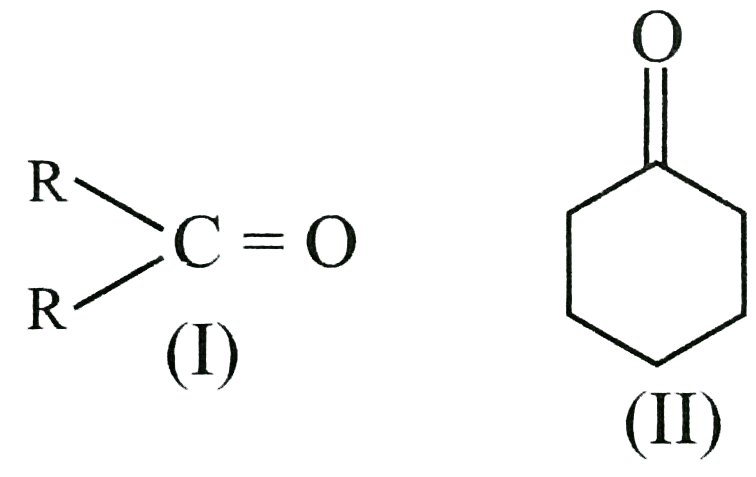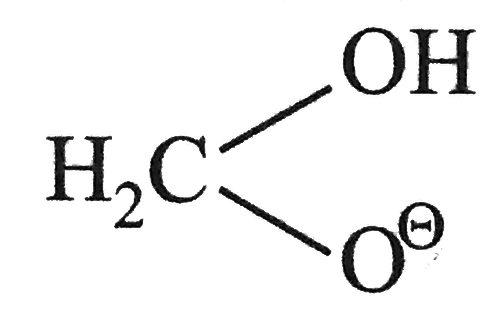Complete Solutions to Section B - Assertion Reasoning of chapter ALDEHYDES, KETONES AND CARBOXYLIC ACID of Class 12 book with complete answers and questions
| Class 12 | CHEMISTRY |
| Chapter | ALDEHYDES, KETONES AND CARBOXYLIC ACID |
| A2Z | Section B - Assertion Reasoning |
| Number Of Questions | 33 |
| Academic Year | 2023-24 |
Assertion: Lower aldehydes and ketonses are solutble in water but the solubility decreases as the molecular mass increase.
Reason : Distinction between aldehydes and letones.
View SolutionAssertion: Formic acid reduces mercuric chloride to mercurous chloride on heating , while acetic acid does not.
Reason : Formic acid is stronger acid than acetic acid.
View SolutionAssertion: Boiling and melting point of amides are higher than corresponding acids
Reason : It is due to strong intermolecular hydrogen bonding in their molention.
View SolutionAssertion: Hydroxyketones are not directly used in Grignard reaction.
Reason : Griganard reagnts react with hydroxyl group.
View SolutionAssertion: Isobutanal does not give iodoform test.
Reason : It does not have `alpha`-hydrogen.
View SolutionAssertion: The `pK_(a)` of acetic acid is lower than that of phenol.
Reason : Phenoxide ion is more resonance sabilised.
View SolutionAssertion: Acetamide has more polar`gt C = 0` group than ethyl acetoacetate.
Reason : `ddot NH_(2)` is more electron donating than `OC_(2)H_(5)`
View SolutionAssertion: `(CH_(3))_(3)C COC(CH_(3))_(3)` and acetone can be distanguished by the reaction with `NaHSO_(3)`.
Reason : `HSO_(3)` is the nucleophile in bisulphite addition.
View SolutionAssertion: Cyclohexanone exhibits keto-enol tautomerism.
Reason : In Cyclohexanone, one from contains the keto group while other contains enolic group `(-C = C - OH)`
View SolutionAssertion: Benzaldehyde is more reactive than ethanal towards nucleophilic attact.
Reason : The overall effect of- `l` and `+R` effect of phenyl group decrease the electron density on the carbon atom of `gtC = O` group in benzaldehyde.
View SolutionAssertion: `p-N, N-`dimethylaminobenzaldehy under-goes benzoin condensation
Reason : The aldehydic `(-CHO)` group is meta directing.
View SolutionAssertion: In sodium formate, both the `C - O` bonds have same value `1.27 Å`
Reason : Equal bond length is due to the phenomenon of resonance.
View SolutionAssertion: Esters which contain `alpha-`hydrogens undergo Claisen condensation.
Reason : `LiAIH_(4)` reduction of esters gives acids
View SolutionAssertion: `beta`-Keto carboxylic acids lose `CO_(2)` when heated of about `370 K`.
Reason : An enol is first formed by loss of `CO_(2)`, but it readily tautomerises to the more stable ketone.
View SolutionAssertion: The acetate ion is resonance stablized
Reason : Acetate ion is more basic than the methoxide ion.
View SolutionAssertion: `p-`hydroxybenzoic acid has a lower boiling point than `o-`hydroxybenzoic acid.
Reason : `o-`hydroxybenzoic acid has nteramolecular hydrogen bonding
View SolutionAssertion: Aromatic aldehydes can be distinguished from aliphatic aldehydes by fehling's solution
Reason : Fehing's solution is an alkaline solution of `CuSO_(4)` containing Rochelle salt.
View SolutionAssertion: Paracids are stronger acids than corresponding carboxylic acids
Reason : The anion of carboxylic acis is stabilized by resonance but not that of paracids.
View SolutionAssertion: Acerylic acid `(CH_(2) - CHCOOH)` is a weaker acid than benzonic acid `(C_(6)H_(5)COOH)`.
Reason : Ethylenic double bond is lessel electrondonating than benzene ring.
View SolutionAssertion: Acetoacetic ester `(CH_(3)COCH_(2)COOHH_(5))` contains `CH_(3)CO` group but does not give idoform test.
Reason : The H-atoms of the `CH_(3)` group are more acidic than those of `CH_(2)` group
View SolutionAssertion: `2-Butanal` lacks enolisable H-atom , `alpha`- to carbonyl group still it has cufficient acidic charater.
Reason : The conjugate base of `2-butanal` is stablised by resonance.
View SolutionAssertion: Formic acid reduces Tollens reagent.
Reason : Compounds containing `CHO` group reduce Tollens reagent.
View SolutionAssertion: Aldehyde and keton ungergo nucleophilic addition reaction with carbon nucleophile and undergo nucleophilic addition-climination reaction with nitrogen Nucleophile.
Reason : Addition of nuclephile on aldehyde and keton form retrahedral intermediate , in case of tertahedral intermediate of nitrogen nucleophile nonbonding molecule to eliminate while in case of carbon and hydrogen nucleophile nonbonding electron are not present.
View SolutionAssertion: The rate of addition reaction of alcohol on aldoehyde can be increased by adding small amount of base.
Reason : Addition of alcohols to an aldehyde from acetal.
View SolutionAssertion:

Compound II is more reaction towards nuclophilic addition reaction.
Reason : Cyelic ketones are more acyclic keton due to less steric hindrance and compact structure of cyclic keton.
View SolutionAssertion: `NaHSO_(3)` is used in separation and purification of aldehydes.
Reason : `NaHSO_(3)` is reducing agent.
View SolutionAssertion: Dehydration of aldol takes place by the following mechanism.

Reason : It is due to acidity of `alpha-H` and stability of conjugated double bond.
View SolutionAssertion: Cinnamaldehyde `(Ph - CH = CH - CHO)` falls to undergo aldol condensation.
Reason : This is due to the fact that cinnamaldehyde does not have acidic `alpha - H`.
View SolutionAssertion: `C CI_(3)CHO` froms an isolable crystaline hydrate.
Reason : Electron withdrawing chlorine atoms stabilise liydrate by intramolecular H-bonding.
View SolutionAssertion: Acetal are easily converted to present carbonyl compound. The easy intergoconversion makes acetal attractive as protecting grouo of prevent carbonyl compound.
Reason : Acetal are easily hydrolyses in acidic as well as basic medium.
View SolutionAssertion: Acetaldehyde reacts with nitromethane in presence of dil. `NaOH` to give 1-nitro - 2-propanol
Reason : The hydrogen atoms of acetaldehyde are more acidic than nitromethane.
View SolutionAssertion: The addition of ammonia derivative to a carbonyl compound is carried out in weakly acids medium.
Reason : In weakly acidic medium attacking nucleophile is also protonated.
View SolutionAssertion: `HCHO` is always oxidized in the crossed Cannizzaro reaction. Reason : `HCHO` is the most reactive aldehyde, it axist in aqueous `OH^(-)` solution as the conjugate base of its hydrate
 , there is also a statistical factor because `HCHO` has two aldehydic hydrogen available for transfer whilein other aldehyde hydrate anion has only one such hydrogen atom.
, there is also a statistical factor because `HCHO` has two aldehydic hydrogen available for transfer whilein other aldehyde hydrate anion has only one such hydrogen atom.
View Solution
Section B - Assertion Reasoning questions and complete solutions for chapter ALDEHYDES, KETONES AND CARBOXYLIC ACID of A2Z CHEMISTRY (HINGLISH) of Class 12
All Exercises from A2Z Class 12 CHEMISTRY ALDEHYDES, KETONES AND CARBOXYLIC ACID
- AIIMS Questions
- AIPMT/NEET Questions
- Assertion-Reasoning Questions
- Cannizaro'S Reaction
- Carboxylic Acid
- Derivatives Of Carboxylic Acid
- Methods Of Preparation Of Aldehydes And Ketones
- Miscellaneous Reactions Of Aldehydes And Ketones
- Oxidation And Reduction Of Carbonyl Compounds
- Section A (Topicwise question
- Section B - Assertion Reasoning
- Section D - Chapter End Test